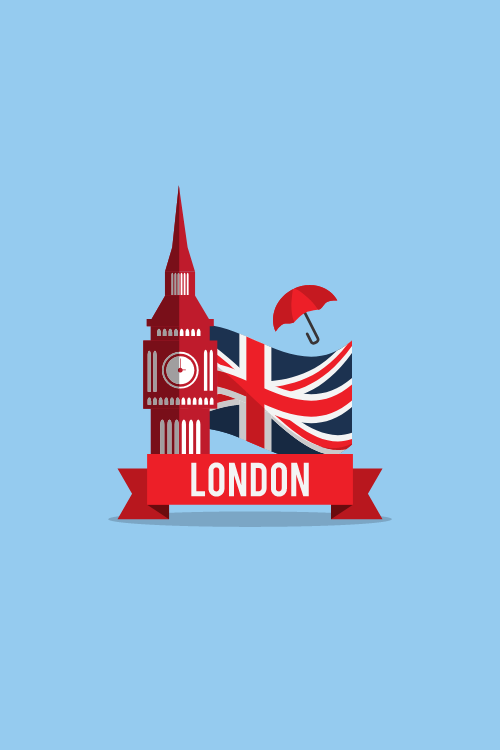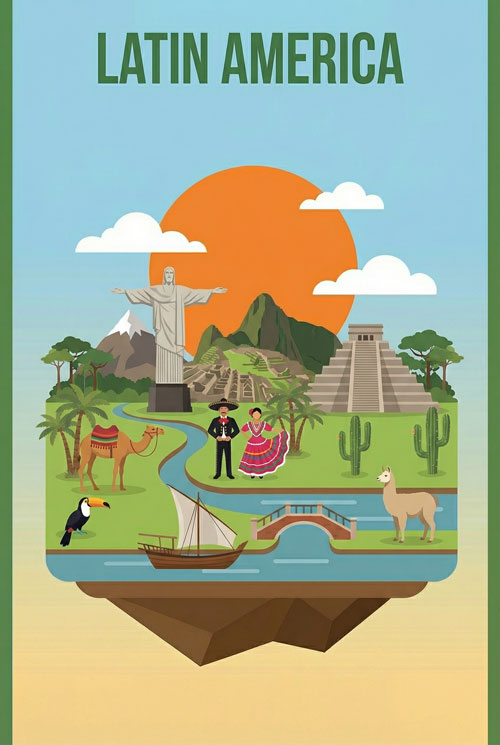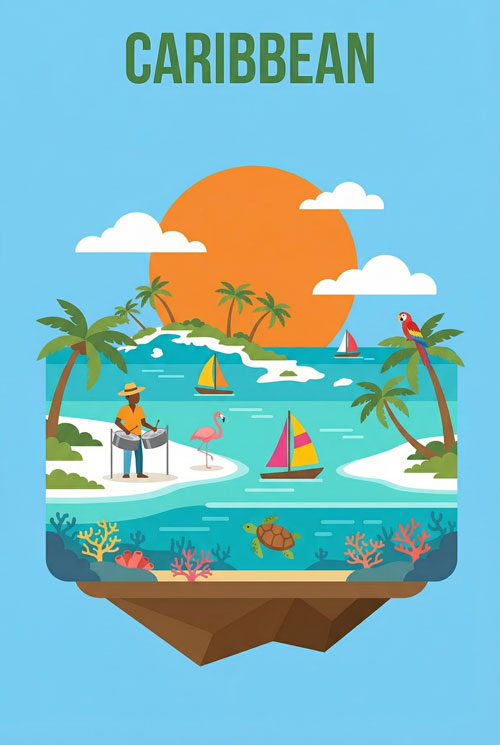Travel Guide
Turkey Travel Guide: Everything You Need To Know
Planning a trip to Turkey? You’re in for an incredible experience.
This diverse country offers ancient wonders, stunning coastlines, vibrant cities, and delicious food. To make your journey smooth and unforgettable, this guide covers everything you need: visa rules, safety tips, the best places to visit like Istanbul and Cappadocia, how to get around, budgeting advice, and staying connected easily. Think of this as your helpful friend, giving you the inside scoop for an amazing Turkish adventure.
Planning Your Trip to Turkey: First Steps
Getting the basics right before you go makes all the difference. Let’s look at what you need to sort out first.
Visa and Entry Explained
Good news for many travelers! If you hold an ordinary passport from numerous countries, you likely don’t need a visa for tourist stays up to 90 days within a 180-day period.
However, pay close attention to your passport. It must be valid for at least six months after you plan to enter Turkey. This is non-negotiable. Also, make sure you have at least one completely blank page for entry and exit stamps. They can deny entry if you don’t have enough space.
Getting those entry and exit stamps is vital. You’ll definitely need the entry stamp if you plan on taking any domestic flights within Turkey. Forgetting the exit stamp could cause problems or fines on future trips.
If you’re planning to work, study, or do research, you’ll need a specific visa before you arrive. Get this sorted through a Turkish embassy or consulate in your home country.
Always double-check the very latest rules for your specific nationality on the official Turkish government e-visa website. Requirements can change, and official passport holders might have different rules.
Pick the Perfect Time for Your Turkish Adventure
When should you go? It really depends on what you want to do and see.
Summer (May to September) is peak season. Expect long, sunny, hot days. This is perfect for hitting the beautiful beaches along the coast.
Prefer cooler weather and fewer crowds? The shoulder seasons, April and October, are fantastic choices. The weather is milder, making sightseeing more comfortable.
Here’s a thought: Visiting Cappadocia in winter can be magical. Imagine those unique rock formations covered in a dusting of snow!
If sailing the stunning Turquoise Coast is high on your list, summer is definitely the best time.
Turkey’s climate varies a lot across the country. This means you can find a good time to visit almost any time of year. Knowing the seasonal differences helps you plan the trip that’s perfect for you.
Budgeting Smartly for Turkey
Let’s talk money. The currency in Turkey is the Turkish Lira (TL).
ATMs are easy to find in cities and tourist areas, so getting cash isn’t usually a problem. An interesting traveler tip suggests that some jewelry shops might offer better exchange rates than official exchange offices. It’s worth comparing rates if you’re exchanging cash, but always be cautious.
Eating out can be surprisingly affordable. A meal for two at a decent local restaurant often costs less than $20 USD (excluding alcohol or fancy places). Even nice hotels in Istanbul can be quite reasonably priced compared to US or Western European standards.
Be aware that prices in heavily touristed spots might be a bit higher. However, overall, Turkey remains a very budget-friendly destination, especially when converting from stronger currencies. Planning your budget is easier knowing things are generally affordable.
Traveler Insight: “I was amazed at how far my money went, especially with food. Delicious meals for just a few dollars!”
Staying Safe and Sound in Turkey
Your safety is always the top priority. Here’s what you need to know about staying secure in Turkey.
Know Before You Go: Safety Advisories
It’s important to be aware of current travel advisories. The U.S. Department of State, for example, advises travelers to exercise increased caution in Turkey. This is mainly due to risks of terrorism and potential arbitrary detentions.
Certain areas carry higher risks. Specifically, avoid travel to Sirnak Province, Hakkari Province, and any area within 10 kilometers (about 6 miles) of the Syrian border. The risk of terrorism is higher in these regions.
Terrorist groups have plotted attacks in Turkey, sometimes targeting places popular with tourists. These can happen unexpectedly at locations like:
- Transportation hubs (airports, bus/train stations)
- Markets and shopping malls
- Government buildings
- Hotels, clubs, and restaurants
- Places of worship
- Parks and public gatherings
Be extra vigilant at airports and large events.
There’s also a risk of arbitrary detentions. Some individuals, including foreign citizens, have been detained based on alleged ties to questionable groups, sometimes with little evidence. Using social media to criticize the government or participating in unapproved protests can also lead to arrest. Some foreigners have faced exit bans, preventing them from leaving.
While this sounds serious, being aware helps you take sensible precautions.
Simple Steps for a Secure Trip
Here are practical ways to enhance your safety:
- Carry ID: Always have your passport or another valid photo ID with you.
- Stay Informed: Keep an eye on local news for any developing situations or areas to avoid.
- Be Vigilant: Pay attention to your surroundings, especially in crowded places. Maintain a low profile.
- Avoid Demonstrations: Protests can turn unpredictable. It’s best to steer clear.
- Follow Instructions: Always obey Turkish security personnel.
- Choose Secure Hotels: Look for accommodation with visible security measures.
- Adjust Plans if Needed: Be ready to change your itinerary if safety concerns arise.
- Enroll in STEP: If you’re a U.S. citizen, enroll in the Smart Traveler Enrollment Program (STEP). This helps the embassy contact you in an emergency and sends you travel alerts.
- Check Official Resources: Review the latest Country Security Report for Turkey and the CDC’s Travel Health Information page before you go.
- Have a Plan: Think about what you’d do in an emergency. Review the State Department’s Traveler’s Checklist.
Remember, millions visit Turkey safely every year. Taking these common-sense precautions allows you to relax and enjoy your trip more.
Getting Around Turkey with Ease
Turkey is a large country, but navigating it is generally straightforward thanks to good transport options.
Exploring Cities: Public Transport and Taxis
Major cities like Istanbul have great public transport. You’ll find taxis, subways, ferries, trams, buses, and smaller dolmuş (minibuses).
Licensed taxis use meters. This usually means fair prices. However, be a little savvy. Some travelers report issues like drivers taking longer routes or claiming credit card machines don’t work (to insist on cash). It’s wise to confirm the payment method beforehand and have a general idea of your route.
Public transport in Istanbul is extensive but can have quirks. Ticket machines might only take cash. Not all machines sell the Istanbulkart (transit card); some only let you top it up. Transfers between lines (like metro to tram) might require paying again.
Despite these small hurdles, public transport is often the cheapest and most efficient way to see the cities.
Traveling Between Cities: Road, Rail, and Air
For longer distances, you have choices:
- Buses: Turkey has an excellent network of comfortable, modern long-distance buses. They connect almost everywhere and are very popular.
- Trains: Conventional trains connect major cities. High-speed lines are expanding too.
- Flights: Domestic flights are plentiful and often surprisingly affordable, saving lots of time. Turkish Airlines and Pegasus Airlines are major carriers.
Highways in the popular western and coastal regions are generally very good. Road conditions can be less reliable in more remote areas.
Driving requires caution, especially at night in rural areas. Watch out for livestock on roads, poorly lit stretches, and unmarked hazards. Local driving can be… assertive. Drivers sometimes ignore rules, so defensive driving is essential.
Even though it’s big, Turkey is easy to get around using public options. Car rentals offer flexibility if you prefer driving yourself. Scenic rail tours are another option. And along the coast, gulet (traditional wooden yacht) cruises are a fantastic way to travel.
Good news for flyers: The U.S. FAA finds Turkey’s Civil Aviation Authority meets international safety standards.
Unforgettable Places: Turkey’s Top Destinations
Where should you go? Turkey has so many amazing places. Here are some highlights:
Istanbul: Where Continents Collide
Istanbul is simply dazzling. It’s a city bursting with history, culture, energy, and fantastic food, straddling both Europe and Asia.
Must-sees include:
- Hagia Sophia: This architectural marvel has been a church, a mosque, a museum, and is now a mosque again. Be aware some historical Christian mosaics might be covered.
- Blue Mosque: Famous for its stunning blue tiles (currently undergoing some restoration).
- Topkapı Palace: Explore the opulent home of Ottoman sultans.
- Grand Bazaar: A massive, covered market. Get ready to haggle! Aim for at least 40% off the initial price. Linada Carpet & Home is a recommended spot for quality rugs if you’re looking.
- Spice Bazaar: An aromatic feast for the senses.
- Basilica Cistern: An eerie, beautiful underground water storage system.
Take a cruise along the Bosphorus strait for amazing city views from the water. Wander the charming streets, especially in areas like Balat or Karaköy.
Istanbul is a foodie paradise. Try highly-rated spots like Neolokal (book well ahead!), Murver, or Yeni Lokanta. Don’t miss sampling traditional Turkish coffee or exploring local wine bars like Solera Winery (though some travelers found others like Pano or Sensus disappointing). For a sweet treat, visit nostalgic candy shops like Uc Yildiz.
Cappadocia: Land of Fairy Chimneys
Cappadocia, in central Turkey, looks like another planet. Its landscape is famous for “fairy chimneys” – unique rock formations – and ancient cave dwellings.
The absolute must-do experience is a hot air balloon ride at sunrise. Floating over this surreal landscape is unforgettable.
Stay in a unique cave hotel for the full experience. Explore the Göreme Open-Air Museum (a UNESCO site) with its rock-cut churches. Go hiking through the stunning valleys (like Rose Valley or Pigeon Valley). Or try an adventurous quad bike tour.
Cappadocia is truly magical.
Aegean Coast: Sun, Sand, and Ancient Wonders
Turkey’s western coast blends history with beautiful beaches and charming towns.
Ephesus is the star historical site here. It’s one of the world’s best-preserved ancient Roman cities. Allow plenty of time to explore. The Ephesus Experience Museum offers an immersive look at its past. You can easily visit from nearby Selçuk or coastal resorts like Bodrum.
Bodrum is a delightful harbour town. Explore Bodrum Castle (which houses an underwater archaeology museum), wander the narrow white-washed streets, and enjoy the great restaurants. Boat trips are popular – perhaps to Orak Island or on a fun pirate-themed cruise. Relax with a traditional Turkish bath (hammam) experience. Bodrum is known for its food (“Gastrocity”).
Other spots like the ancient city of Priene offer more history off the main tourist track.
Mediterranean Coast: Turquoise Waters & History
Further south, the Mediterranean coast around Antalya offers stunning beaches and more historical sites.
Pamukkale is a major draw. These are the dazzling white calcium terraces formed by mineral-rich hot springs. It looks like a frozen waterfall. You can visit Pamukkale and the adjacent ancient Roman city of Hierapolis on a day trip from Antalya or nearby towns.
The stretch known as the Turquoise Coast is famous for its crystal-clear blue waters. It’s perfect for sailing trips, especially in summer. Explore hidden coves and charming coastal villages.
Beyond the Main Path
If you have more time or seek different experiences:
- Black Sea Coast: Lush green landscapes, tea plantations, and a more rugged coastline.
- Central Anatolia: The country’s heartland, with Ankara (the capital) and other historical sites.
- Eastern & Southeastern Anatolia: Less visited but culturally rich, offering dramatic scenery and ancient history near the Tigris and Euphrates rivers (like Göbeklitepe, potentially the world’s oldest temple). Lake Van is a stunning large lake in the east.
Quick Tip: A guided tour can be a great way to understand the deep history of sites like Ephesus or Topkapı Palace.
Practical Tips for a Smooth Trip
A few final pointers to make your Turkish journey even better.
Language and Locals
Turkish is the official language. In tourist areas, especially Istanbul, you’ll find many people speak some English. However, learning a few basic Turkish phrases (Merhaba – Hello, Teşekkür ederim – Thank you) is always appreciated and can open doors.
Turkey is predominantly Muslim, so be mindful of local customs. When visiting mosques, dress modestly – women should cover their heads, shoulders, and knees; men should wear long trousers. Outside of religious sites, especially in coastal areas and big cities, dress codes are generally relaxed and quite European.
Taste of Turkey: Food Highlights
Turkish cuisine is incredible. Be adventurous! Try kebabs beyond the usual, sample various meze (appetizers), enjoy fresh seafood on the coast, and don’t forget desserts like baklava and künefe. Drink ayran (a salty yogurt drink) – it’s surprisingly refreshing. Trying authentic Turkish delight (lokum) is a must.
Shopping Savvy: Bazaars and Beyond
Shopping, especially in the Grand Bazaar, is an experience. Remember to bargain politely but firmly. Start by offering significantly less than the asking price (maybe 50-60% less) and aim to meet somewhere in the middle, ideally getting at least 40% off. Be prepared to walk away if the price isn’t right.
Besides carpets and ceramics, look for leather goods, spices, jewellery, and textiles. The mentioned candy shops offer unique edible souvenirs too.
Staying Healthy
Before your trip, check the Centers for Disease Control and Prevention (CDC) website for recommended vaccinations and health advice for Turkey. It’s always wise to have travel health insurance. Pharmacies (eczane) are common and pharmacists can often offer advice for minor ailments. Turkey is also becoming a popular destination for medical tourism, offering various procedures at competitive prices.
Staying Connected: Phones and Internet (eSIM vs. SIM)
You’ll likely want data access for maps, information, and staying in touch. You have a few options:
- Local Physical SIM Card: You can buy a SIM card from providers like Turkcell, Vodafone, or Türk Telekom upon arrival (e.g., at the airport or city store). You’ll usually need your passport for registration.
- Pros: Can offer very cheap local data rates if you shop around. Works in any unlocked phone.
- Cons: Requires finding a store, potential language barriers during setup, need to physically swap SIMs (risk of losing your home SIM), activation might take a little time.
- Best for: Longer stays (over 2-3 weeks), budget travelers focused purely on the lowest cost, people using older phones without eSIM capability.
- International Roaming with Your Home Provider: Check your home mobile plan for international roaming packages.
- Pros: Convenient, uses your existing number.
- Cons: Can be very expensive, especially for data.
- Best for: Very short trips where minimal usage is expected, or if cost isn’t a concern.
- eSIM (Embedded SIM): This is a digital SIM built into many newer smartphones. You can buy and activate an eSIM data plan online before you even leave home.
- Pros: Super convenient – often activates automatically on arrival. No physical SIM swapping needed. Keep your home SIM active for calls/texts. Easy to manage via an app. Great for multi-country trips. Setup is usually via QR code or clicking a link.Cons: Requires an eSIM-compatible phone (most flagships from the last few years). Might be slightly more expensive per GB than the absolute cheapest local physical SIM deal (but saves time and hassle).Best for: Travelers prioritizing convenience and instant connectivity, people with eSIM-compatible phones, those visiting multiple countries.
Companies like eSIM4 offer affordable eSIM plans specifically for Turkey and over 200 other destinations globally. Features like auto-connection on arrival and straightforward setup make it a breeze. They even have an app for managing data, buying virtual numbers, or adding international calls/texts if needed. Checking out options like this on https://www.esim4.com/ before your trip can simplify staying connected immensely.
Stay Connected Effortlessly: “Using an eSIM was a game-changer. Landed, turned on my phone, and bam – instant data. No queues, no hassle.”
Putting It All Together: Sample Turkey Itineraries
Need some inspiration on how to structure your trip?
- Classic Two Weeks: A popular route could involve: Flying into Bodrum (3 nights, explore coast/castle), travel to Selçuk (2 nights, visit Ephesus), travel to Pamukkale (1 night), fly or bus to Cappadocia (3 nights, balloons/caves), fly to Istanbul (4 nights, city exploration), fly home. This covers key highlights.
- Coastal Focus (10 Days): Fly into Dalaman or Antalya, explore the Turquoise Coast (sailing trip or hopping between towns like Kaş, Fethiye, Ölüdeniz), potentially add Pamukkale or Ephesus if time allows.
- Istanbul & Cappadocia (7 Days): A shorter trip focusing on the two iconic destinations. Fly into Istanbul (4 nights), fly to Cappadocia (3 nights), fly home.
Many travel resources offer detailed itineraries for various lengths and interests. Use them as a starting point and tailor them to your perfect Turkish adventure.













